
To celebrate Queen Elizabeth II’s extraordinary life of service, a memorial is planned for St James’s Park, close to Buckingham Palace in the heart of London.
The government has launched an online exhibition showcasing the five potential design concepts for the memorial and the public is being asked for feedback on the shortlist in an online consultation by Malcolm Reading Consultants.
The shortlist is the result of an open competition run by Malcolm Reading Consultants that attracted a wide range of creative talent. The five shortlisted teams were selected based on their relevant experience and the unique skills of their multi-disciplinary teams.
The five proposed designs for the Queen Elizabeth II memorial
- ‘Tranquil family of royal gardens’, designed by Norman Foster of Foster + Partners with the artist Yinka Shonibare, the ecologist Prof Nigel Dunnett and the landscape architect Michel Desvigne. Inspired by John Nash’s original romantic landscape, unified by a natural stone tessellated path from the United Kingdom and Commonwealth that meanders to cater to both commuters and visitors. designed by Norman Foster of Foster + Partners with the artist Yinka Shonibare, the ecologist Prof Nigel Dunnett and the landscape architect Michel Desvigne. The design includes a statue of the Queen alongside Philip, a wind sculpture for reflection by Yinka Shonibare, audio installations of the Queen’s voice, a digital conservatory and unity bridge.
- ‘Bridge of Togetherness’, designed by Heatherwick Studio with the sculptor and ceramicist Halima Cassell, MRG Studio, Webb Yates and Arup. Rooted in the idea of togetherness, the design is a physical expression of what the Queen stood for above all else, which is unity. A walk consisting of 70 lily pad stepping stones, runs through the centre of St. James’s Park, with at its centre a bridge with a sculpture of Queen Elizabeth II, protected by a canopy of eight sculptural, limestone lilies.
- ‘Bedrock’, designed by J&L Gibbons with Michael Levine RDI, William Matthews Associates, Structure Workshop and Arup. As the nation’s bedrock, this design features an innovative stone bridge over soil, tree roots and water, with falling water that gently brushes the surface of the lake. The design includes the possibility of perambulation through glades to invite “forest bathing in the heart of the city”.
- Windsor Great Oak, designed by Tom Stuart-Smith with Jamie Fobert Architects, Adam Lowe (Factum Arte) and Structure Workshop. The central element of the design is a cast of an awe-inspiring oak from Windsor Great Park, standing on a plinth in the lake as a representation of her strength, endurance and the historic place of the monarchy in our constitution. Curved stone bridge connects the memorial to the surrounding landscape, with a memorial path, made from stones from across Britain, incorporating bronze casts of significant objects from her life, accompanied by a sonic soundscape of memories.
- Thread of Pathways, designed by WilkinsonEyre with Lisa Vandy and Fiona Clark, Andy Sturgeon Design, Atelier One and Hilson Moran. Drawing inspiration from the many threads of her remarkable life and enduring legacy, the design features a thread of pathways and landscapes gently woven through St James’s Park as a contemplative journey that honours her decades of service. Symbolic spaces for reflection invite visitors to form their own personal connection to the Queen and at the heart stand a pair of elegant bridges that span the lake, framing views of the park, royal palaces, and London skyline. This design was described as having the “the lightest footprint on this Grade I listed park” and is all about enhancing public movement, in their timeless tribute to the monarch.
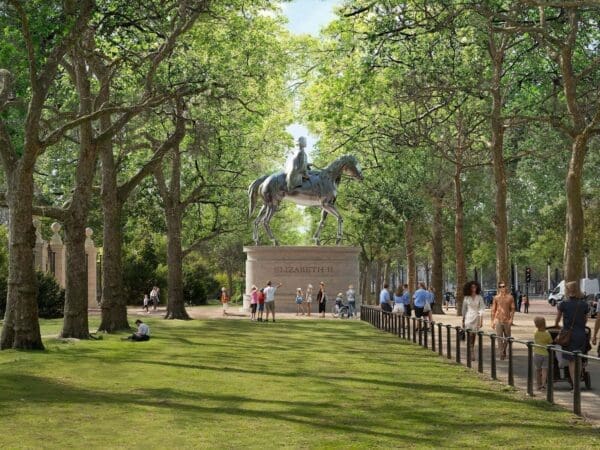
with Yinka Shonibare and Michel Desvigne Paysagiste
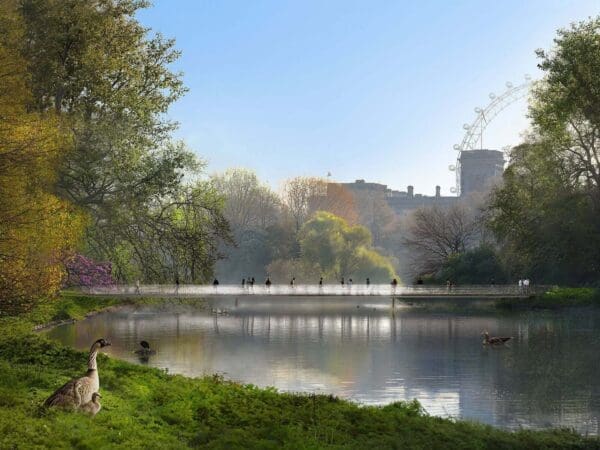
with Yinka Shonibare and Michel Desvigne Paysagiste
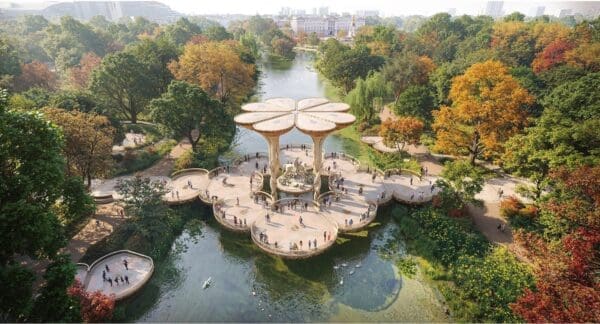
with Halima Cassell, MRG Studio, Webb Yates and Arup
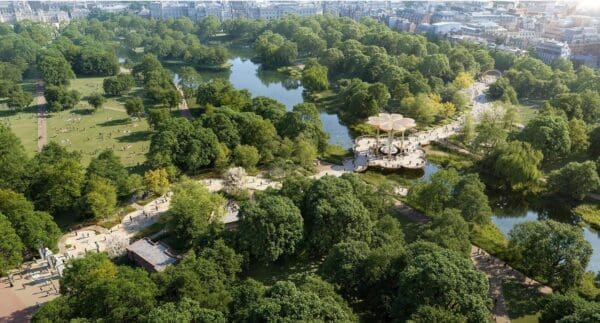
with Halima Cassell, MRG Studio, Webb Yates and Arup
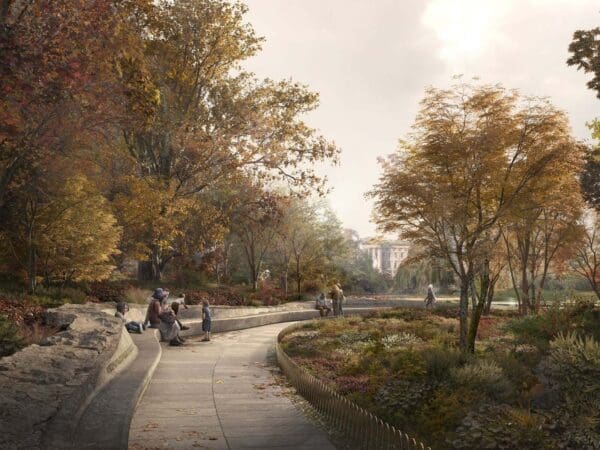
with Michael Levine RDI, William Matthews Associates, Structure Workshop and Arup
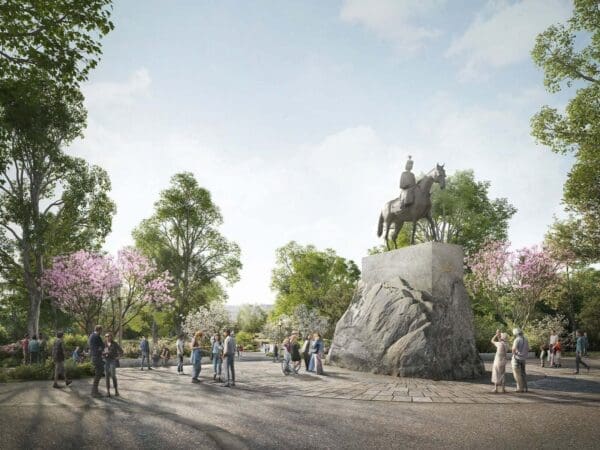
with Michael Levine RDI, William Matthews Associates, Structure Workshop and Arup
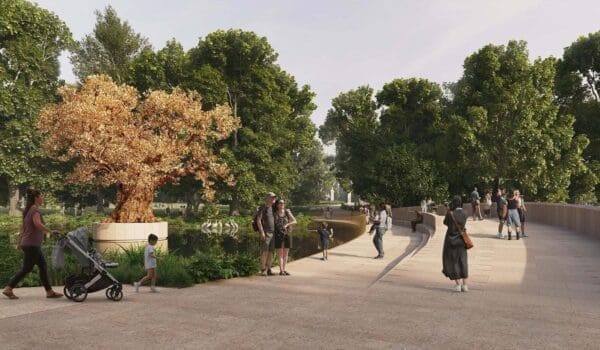
with Jamie Fobert Architects, Adam Lowe (Factum Arte) and Structure Workshop

with Jamie Fobert Architects, Adam Lowe (Factum Arte) and Structure Workshop

with Lisa Vandy, Fiona Clark, Andy Sturgeon, Atelier One, Hilson Moran

with Lisa Vandy, Fiona Clark, Andy Sturgeon, Atelier One, Hilson Moran
The consultation runs until the 19th of May, with images of the memorials issued for illustrative purposes at this stage and a sculptor to be appointed later.

